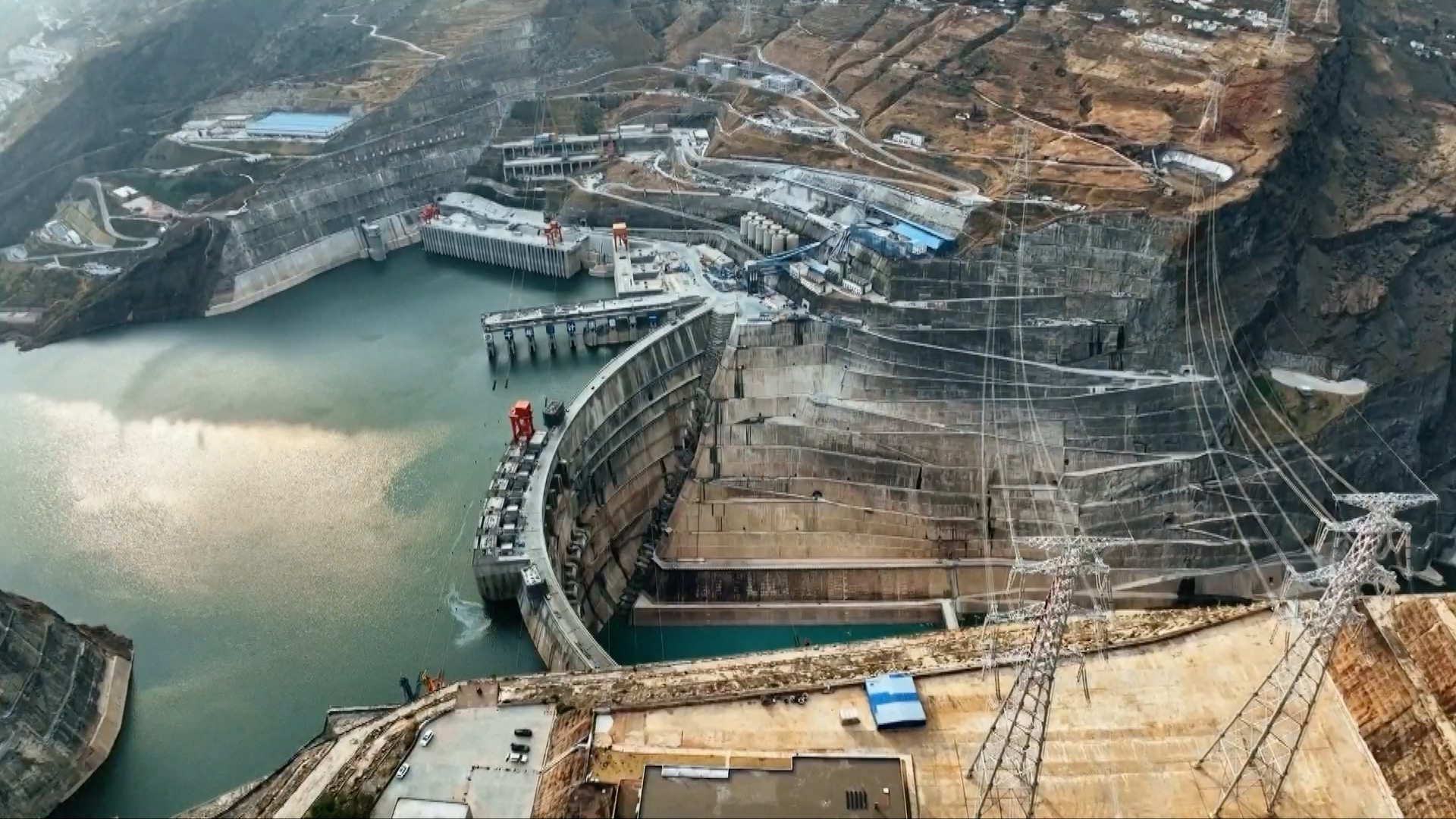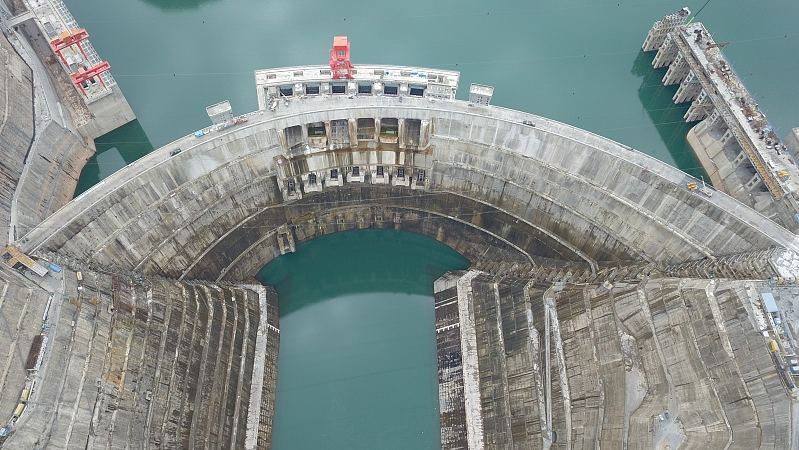00:51

China is on track to build the world's second-largest hydropower plant to propel the country's utilization of clean energy, and the project is brimming with innovations as engineers have embedded an array of cutting-edge technologies to ensure its safe operation.
Located on the Jinsha River, the upper section of the Yangtze River, in Southwest China, Baihetan Hydropower Plant is currently the world's largest and most complex hydropower project under construction.
It is equipped with eight hydroelectric generating units on each side of the dam's bank, producing a combined capacity of 16 million kilowatt hours (kWh). By late September, 12 generators had been put into commercial use after the eight units on the left side started operation.
Once completed, the plant will be the world's second largest of its kind in terms of total capacity, only behind the Three Gorges Dam project in central China's Hubei Province.
The power generated by the Baihetan plant is estimated to save 19.68 million tonnes of standard coal, equivalent to reducing 51.6 million tonnes of carbon dioxide – making a significant contribution to China's goal to peak carbon emissions by 2030 and carbon neutrality by 2060.

A view of Baihetan Hydropower Plant, Shaotong, Yunnan Province, May 20, 2022. /CFP
A view of Baihetan Hydropower Plant, Shaotong, Yunnan Province, May 20, 2022. /CFP
New technologies fuel construction
Satellite positioning technology is being used to ensure the precision of the construction work. The domestically developed Beidou Navigation Satellite System hovering 20,000 kilometers above Earth is monitoring the cementing process and stands ready to alarm even the slightest irregular moves of the equipment pouring 8 million tonnes of cement into the 289-meter-tall dam.
The high precision is necessary because absolute accuracy is required to make sure the curved dam can withstand water pressure as high as 16.5 million tonnes. The arch-shaped top of the dam stretches more than 700 meters long. The dam is also designed to be earthquake resistant, as it sits in one China's seismic zones.
Two of the main construction challenges are controlling the temper of the concrete and preventing even the tiniest cracks in the surface.
"The construction of the dam requires pouring a large amount of concrete. The hydration reaction of the cement in the concrete will generate heat, which will increase the temperature of the concrete after pouring," said Sun Minglun, senior engineer of the construction unit, was quoted as saying by The People's Daily. "Cracks would be inevitable without effective temperature control."
A specially blended cement that releases minimum heat is being used to build Baihetan to reduce the risk of the thermal cracking.
"The project opened the door for a wider use of low-heat cement," said Zhang Chaoran, former chief engineer of the China Three Gorges Project Corporation, a key operator of hydro plants.
The 16 power generators installed beneath the dam are also adopting some of the most advanced gear-making technologies. The turbines were manufactured using intelligent digital technologies, and are so precise that they only swing off their axes by the width of a human hair.
Tens of thousands of sensors have been installed throughout the body of the dam, comprehensively reflecting the temperature, pressure, environment and progress of the concrete construction in real time.
Technicians can make adjustments based on the information to keep the dam functioning well.
The intelligent construction project of Baihetan costs 170 million yuan, according to Xu Weilin, a member of the Chinese Academy of Engineering.
Intelligent technologies have been deployed since construction began, he said, adding that digital simulations and data feedback technologies are constantly monitoring the dam's health.